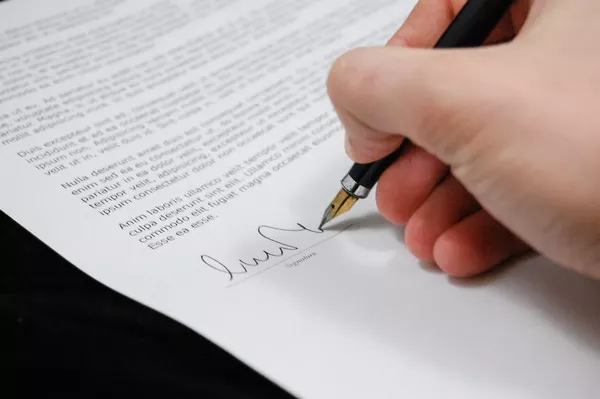Phasing out a friendship can be a challenging and emotionally charged process. Friendships, much like romantic relationships, can undergo shifts due to various circumstances, including life changes, personal growth, or evolving interests. Understanding how to navigate this delicate situation with empathy and respect is essential for maintaining your emotional well-being and that of the other person involved. This article will guide you through the process of phasing out a friendship thoughtfully and respectfully.
Understanding the Need to Phase Out a Friendship
The decision to phase out a friendship may stem from several factors, such as:
Incompatibility: Over time, friends may discover that their values, interests, or lifestyles no longer align. This misalignment can lead to feelings of frustration or disconnection.
Toxicity: If a friendship has become toxic, characterized by negative interactions, manipulation, or emotional drain, it is crucial to consider phasing it out to protect your mental health.
Life Changes: Major life transitions, such as moving to a new city, starting a new job, or undergoing significant personal changes, can affect friendships. Sometimes, these changes make it difficult to maintain connections.
Desire for Growth: Personal growth often involves reevaluating relationships. You may find that you are evolving in ways that no longer fit within certain friendships, prompting the need to distance yourself.
Signs It’s Time to Phase Out a Friendship
Recognizing the signs that indicate it may be time to phase out a friendship can help you make informed decisions:
Feeling Drained: If interactions with a friend consistently leave you feeling exhausted or emotionally drained, it may be a sign that the friendship is no longer serving you.
Lack of Support: Healthy friendships are characterized by mutual support. If you notice that your friend is unsupportive or dismissive of your achievements and struggles, it may be time to reassess the relationship.
Increased Conflict: Frequent arguments or misunderstandings can signal a breakdown in communication. If these conflicts are unresolved, they may contribute to a toxic dynamic.
Growing Apart: If you and your friend are pursuing significantly different paths or interests, it can create a sense of distance. Acknowledging this divergence is essential for determining whether to maintain the friendship.
Steps to Phase Out a Friendship
Phasing out a friendship requires sensitivity and consideration. Here are steps to help you navigate this process:
1. Reflect on Your Feelings
Before making any decisions, take time to reflect on your feelings about the friendship. Consider the following questions:
What are the specific reasons prompting you to phase out this friendship?
How has this friendship impacted your emotional well-being?
What do you hope to achieve by phasing it out?
This self-reflection can help you gain clarity and ensure that your decision aligns with your values and well-being.
See Also: How to Maintain Online Friendships?
2. Gradually Reduce Contact
Instead of abruptly cutting ties, consider gradually reducing contact with your friend. This can be achieved through:
Less Frequent Communication: Respond to messages less frequently, and take your time to reply. This signals a shift in your availability without explicitly ending the friendship.
Declining Invitations: Politely decline invitations to hang out or participate in activities together. You can express a desire to focus on personal matters or other commitments.
Setting Boundaries: If your friend tends to overstep boundaries, gently reinforce them. For instance, if they frequently call you late at night, let them know you prefer to communicate during the day.
3. Be Honest (When Necessary)
If your friend approaches you about the changes in your relationship, consider being honest about your feelings. You don’t have to provide extensive details, but a simple and respectful explanation can help them understand the situation. Here are some tips for having this conversation:
Use “I” Statements: Frame your feelings using “I” statements, such as “I feel overwhelmed by our friendship lately” instead of placing blame. This approach emphasizes your feelings without attacking the other person.
Stay Calm: Approach the conversation with a calm demeanor. Emotions can run high in these situations, but staying composed can help foster a constructive dialogue.
Be Respectful: Regardless of your reasons, approach the conversation with respect for your friend’s feelings. They may be hurt or confused, so acknowledging their emotions is crucial.
4. Emphasize the Positive Aspects
During conversations about phasing out the friendship, it can be helpful to highlight the positive aspects of your time together. Acknowledging the good memories can create a sense of closure for both parties:
Express Gratitude: Thank your friend for the good times you shared. Expressing appreciation can help soften the emotional impact of the situation.
Share Memories: Reminisce about positive experiences you had together. This can help reinforce that the friendship was meaningful, even if it’s coming to an end.
5. Prepare for Different Reactions
Understand that your friend may have various reactions to your decision. They might be understanding, or they might feel hurt or angry. Preparing for different responses can help you manage the situation more effectively:
Accept Their Feelings: Allow your friend to express their emotions. This can be challenging, especially if they react negatively, but it’s important to validate their feelings.
Remain Firm: If your friend attempts to persuade you to reconsider, stay firm in your decision while remaining compassionate. It’s essential to prioritize your well-being.
6. Focus on Self-Care
Phasing out a friendship can be emotionally taxing. Therefore, it’s crucial to engage in self-care during this time. Consider the following:
Seek Support: Talk to trusted friends or family members about your feelings. Sharing your experience can provide emotional relief and perspective.
Engage in Activities You Enjoy: Focus on hobbies and activities that bring you joy. This can help you redirect your energy and emotions positively.
Practice Mindfulness: Engage in mindfulness practices, such as meditation or journaling, to process your feelings and maintain emotional balance.
7. Move On Gracefully
Once you have phased out the friendship, allow yourself to move on gracefully. This includes:
Avoiding Gossip: It’s tempting to share your experience with others, but try to avoid gossiping about the friendship. Respecting your friend’s privacy fosters a sense of integrity.
Reflecting on Lessons Learned: Take time to reflect on what you’ve learned from the friendship. Consider the qualities you value in friendships and how you can apply these lessons moving forward.
Open Yourself to New Connections: Use this opportunity to focus on building new friendships or deepening existing ones. Surrounding yourself with positive, supportive people can enhance your social life.
Conclusion
Phasing out a friendship is a complex and emotional journey. While it can be difficult to navigate, approaching the situation with empathy, respect, and self-awareness can lead to a healthier outcome for both parties. Recognizing the signs that it’s time to move on, gradually reducing contact, and communicating openly when necessary can help facilitate this transition. Ultimately, prioritizing your emotional well-being and surrounding yourself with supportive relationships is essential for personal growth and fulfillment.
Related topics:






















